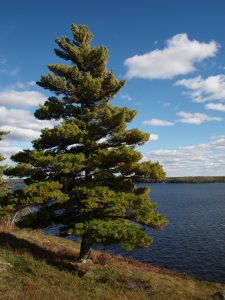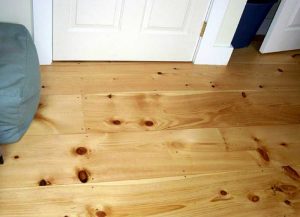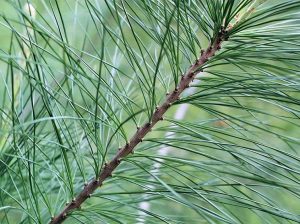Eastern White Pine
Eastern White Pine is a tree native to eastern North America. It is a large pine tree with historical significance as the Iroquois (Native American Haudenosaunee) considered it as the “Tree of Peace” and chose it as a symbol for the unity of the Iroquois Confederacy.
Scientific Classification
| Kingdom | Plantae |
| Phylum | Pinophyta |
| Class | Pinopsida |
| Order | Pinales |
| Family | Pinaceae |
| Genus | Pinus |
| Subgenus | Strobus |
| Species | Pinus Strobus |
Quick Information
| Other Names | Northern White Pine, Weymouth Pine, White Pine, Eastern White Pine |
| Identification | Size – 65-100 ft (20-30 m) tall Trunk Diameter – 3-5ft (1.0-1.6 m) Height – can grow up to 50-57.55m (164 ft) inch -188 ft 10 inch) tall. Leaves (Needles) – Bluish-green flexible leaves arranged in bundle of 5, finely serrated, 5-13 cm (2-5 inch) long Cones – Slender 8-16 cm (3.1-6.3 inch) long and 4-5 cm (1.6-2.0 inch) broad when open. Seeds – 4-5mm (0.16-0.20 inch) long with a slender 15-20mm (0.59-0.79 inch) wing. Bark– Dark gray colored, rough and scaly. |
| Distribution/ Range | It is found widely from Newfoundland, Canada till the Great Lakes region extending up to southeastern Manitoba and Minnesota in the United States and south along the Appalachian Mountains and upper Piedmont to northernmost Georgia. |
| Habitat | The tree is found in Elevated and sandy wood lands as well as in forested bogs. |
| Hardiness | Up to 3 |
| Growth Rate | Slow growth for initial 2-3 years, later on grows rapidly between 10-15 years at an annual average rate of 1m (3ft). |
| Lifespan | 200 years if undisturbed, exceeding maximum age up to 450 years. |
| Growing Conditions | Summer conditions– Moderate temperature (wiki) Winter conditions– Can sustain cold and snowy winters. Rainfall – Moderate to heavy rainfall. Sunlight – Grows well in full sunlight. Soils – Eastern White Pines grow in soil types like Spodosols, Alfisols, Entisols, Ultisols and Inceptisols. |
| Disease and Pests | Disease – Blister rust, Red ring rot, Root rot, Beech bark disease. Pests– White pine weevil, white pine aphid, white pine sawfly. |
| Flowering/Fruiting | Between May and June |
| Breeding System | Monoecious |
| Seed Development | Stratification of seeds takes place for 60 days at 33° to 41° F (1°to 5° C) |
| Seed Production | Seed production generally takes place in every 3 to 5 years, while some seeds are produced in the years in-between. |
| Wildlife value | Its seeds are a source of food for black bears, rabbits, red squirrels, and birds like red crossbill. Beavers, snowshoe hares, porcupines feed on the bark of the tree while birds like woodpeckers, common grackles, mourning doves and chickadees use the tree for nesting. |
| Cultivars |
|
| Uses | Its lumber is mainly used for making Furniture and wooden articles. The tree’s sap has medicinal qualities of antibacterial and inner bark has ingredients of cough remedies. It is also used as a Christmas tree. |
| IUCN Conservation Status | Least Concern |
Interesting Point
The British Royal Navy used the pine trunks for making masts for their ships.
Reference:
- http://www.wood-database.com/eastern-white-pine/
- https://eol.org/pages/1061748
- https://www.conifers.org/pi/Pinus_strobus.php
- https://www.srs.fs.usda.gov/pubs/misc/ag_654/volume_1/pinus/strobus.htm
- https://www.michigan.gov/dnr/education/michigan-species/plants-trees/whitepine
- https://plants.ces.ncsu.edu/plants/pinus-strobus/
- https://realchristmastrees.org/education/tree-varieties/white-pine/
- https://wp.towson.edu/glenarboretum/home/eastern-white-pine/
Published on February 22nd 2017 by Bony Palchaudhuri under Pine.
Article was last reviewed on 5th December 2024.














